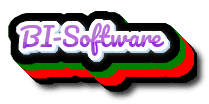In today’s fast-paced higher education landscape, American universities face numerous challenges in managing their relationships with students, alumni, and other stakeholders. To address these challenges, many institutions have turned to Customer Relationship Management (CRM) software. In this article, we will explore the world of CRM software in American universities, its benefits, and the various options available.
<img src=”https://qrsolutions.in/wp-content/uploads/2021/02/Sec3_CRM-1-scaled.jpeg” alt=”American University CRM Software: A Comprehensive Guide” />
What is CRM Software?
CRM software is a tool designed to manage and analyze customer interactions, with the goal of improving business relationships and driving sales growth. In the context of higher education, CRM software helps American universities to streamline their communication, recruitment, and retention efforts. It provides a centralized platform for managing student data, tracking interactions, and analyzing behavior.
Benefits of CRM Software in American Universities
The implementation of CRM software in American universities has numerous benefits. Some of the most significant advantages include:
- Improved Student Engagement: CRM software enables universities to personalize their interactions with students, tailoring communication to individual needs and interests.
- Enhanced Recruitment: By analyzing data and behavior, universities can identify potential students and develop targeted recruitment strategies.
- Increased Retention: CRM software helps universities to monitor student progress, identify at-risk students, and provide timely support to improve retention rates.
- Better Alumni Relationships: CRM software facilitates ongoing communication with alumni, enabling universities to build stronger relationships and secure funding and support.
- Data-Driven Decision Making: By analyzing data and trends, universities can make informed decisions about programming, resources, and strategic planning.
Types of CRM Software for American Universities
There are several types of CRM software available for American universities, each with its own strengths and weaknesses. Some of the most popular options include:
- Salesforce: A cloud-based CRM platform that offers a range of features, including sales, marketing, and customer service tools.
- Microsoft Dynamics: A comprehensive CRM solution that integrates with other Microsoft products, such as Office and Azure.
- HubSpot: An all-in-one CRM platform that provides tools for marketing, sales, and customer service, with a focus on inbound marketing.
- Jenzabar: A higher education-specific CRM solution that offers features such as recruitment management, student success, and alumni engagement.
- Ellucian: A comprehensive CRM platform designed for higher education, offering features such as student information systems, recruitment management, and advancement services.
Implementation and Integration
Implementing CRM software in an American university can be a complex process, requiring careful planning and integration with existing systems. Some key considerations include:
- Data Migration: Transferring existing student data into the new CRM system, while ensuring data integrity and accuracy.
- System Integration: Integrating the CRM software with other university systems, such as student information systems, marketing automation tools, and customer service platforms.
- Training and Support: Providing training and support for university staff, to ensure they are comfortable using the new CRM software and can maximize its benefits.
- Customization: Configuring the CRM software to meet the specific needs of the university, including workflows, fields, and reporting.
Challenges and Limitations
While CRM software offers many benefits for American universities, there are also challenges and limitations to consider. Some of the most significant include:
- Data Quality: Ensuring the accuracy and completeness of student data, to maximize the effectiveness of the CRM software.
- System Complexity: Managing the complexity of the CRM software, including configuration, customization, and integration with other systems.
- User Adoption: Encouraging university staff to adopt the new CRM software, and ensuring they have the necessary training and support.
- Cost and ROI: Justifying the cost of the CRM software, and measuring its return on investment (ROI) in terms of improved student engagement, recruitment, and retention.
FAQ
- What is the cost of CRM software for American universities?
The cost of CRM software varies widely, depending on the vendor, features, and implementation requirements. Some CRM software options can be quite expensive, while others offer more affordable pricing models. - How long does it take to implement CRM software in an American university?
The implementation time for CRM software can range from several months to several years, depending on the complexity of the project, the size of the university, and the availability of resources. - What kind of training and support do university staff need to use CRM software?
University staff will require training on the specific features and functions of the CRM software, as well as ongoing support to ensure they can maximize its benefits. - Can CRM software be integrated with other university systems?
Yes, most CRM software options can be integrated with other university systems, such as student information systems, marketing automation tools, and customer service platforms. - How can American universities measure the effectiveness of their CRM software?
Universities can measure the effectiveness of their CRM software by tracking key performance indicators (KPIs) such as student engagement, recruitment, and retention rates, as well as return on investment (ROI) and customer satisfaction.
Conclusion
American universities face numerous challenges in managing their relationships with students, alumni, and other stakeholders. CRM software offers a powerful solution to these challenges, providing a centralized platform for managing student data, tracking interactions, and analyzing behavior. By understanding the benefits, types, and implementation requirements of CRM software, American universities can make informed decisions about how to leverage this technology to drive student success, recruitment, and retention. While there are challenges and limitations to consider, the potential benefits of CRM software make it an essential tool for any American university seeking to thrive in today’s competitive higher education landscape.
<h2>Closure</h2>
Thus, we hope this article has provided valuable insights into American University CRM Software: A Comprehensive Guide. We hope you find this article informative and beneficial. See you in our next article!
